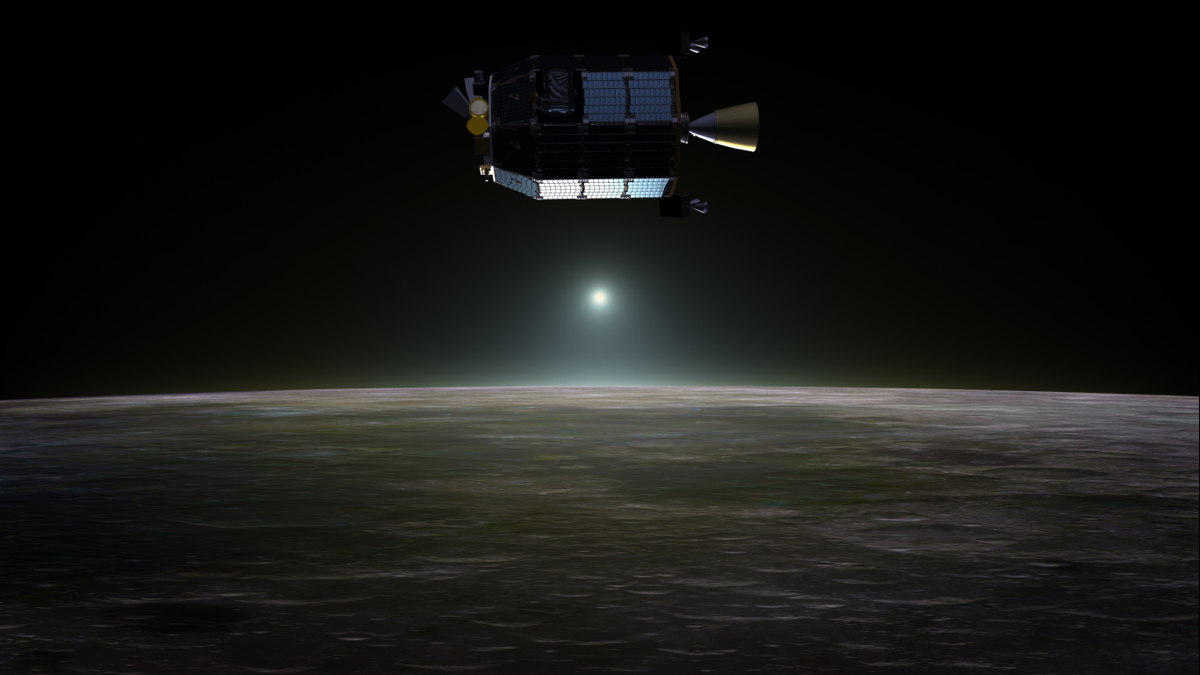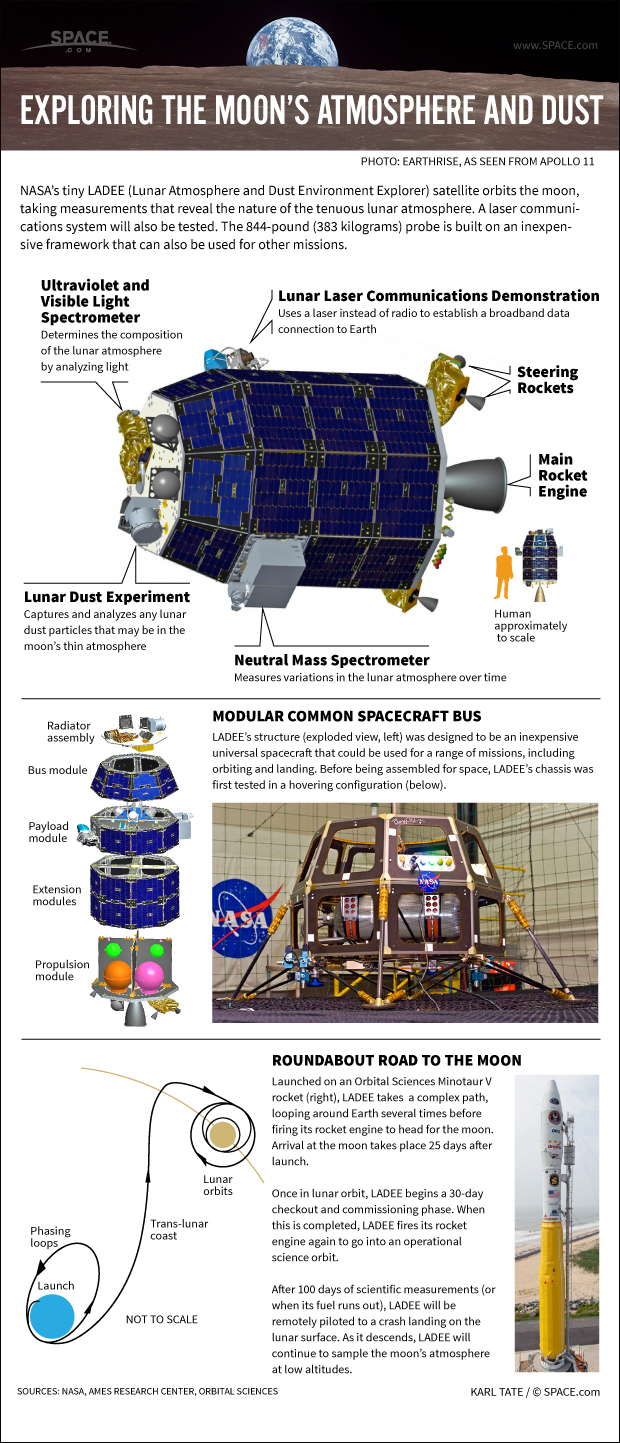NASA's New Moon Probe Begins Final Leg of Lunar Trek

NASA's newest lunar probe is gearing up to begin the final phase of its month-long trek to the moon.
The space agency's LADEE moon dust spacecraft is in its third and final orbit around Earth before moving to the moon, and everything is looking good. The lunar probe launched into space on Sept. 6 to begin its circuitous route to the moon.
LADEE's second burn, designed to take it into a high elliptical orbit, was so "perfect" that the third maneuver planned to take the probe into an even higher orbit will not be necessary, NASA officials wrote in a mission update on Sept. 27. The loveseat-sized probe will make its final close flyby of Earth Tuesday (Oct. 1).
After its last close approach, "LADEE will travel to the point at which it will be captured around the moon using an initial Lunar Orbit Insertion (LOI-1) burn of the onboard main engine," Butler Hine, LADEE project manager, wrote. "After that, LADEE will be in lunar orbit."

LADEE's name is pronounced "laddie" and is short for the Lunar Atmosphere and Dust Environment Explorer. Since the probe began orbiting Earth, scientists on the ground have successfully tested the spacecraft's three science instruments and laser communications experiment. The spacecraft's antenna that will be used to send information to the ground is also functioning well. LADEE is expected to transfer into lunar orbit on Oct. 6.
Get the Space.com Newsletter
Breaking space news, the latest updates on rocket launches, skywatching events and more!
The healthy instruments will be responsible for investigating some long-standing mysteries about the moon's thin atmosphere and strange dust when it is expected to enter the into moon's orbit on Oct. 6.
The thin atmosphere of the moon represents the most common known kind of atmosphere in the solar system, NASA scientists have said. By understanding the composition of the moon's atmosphere, researchers might be able to more accurately classify the atmospheres of large asteroids, many moon and even small planets like Mercury.
LADEE is also designed to look into a strange glow Apollo astronauts saw on the horizon of the moon before sunrise. The glow may have been created by small dust particles lofted high into the lunar atmosphere, and data collected by LADEE could help scientists nail down an answer to that moon conundrum.
The $280 million LADEE mission launched to the moon atop the first flight of a Minotaur V rocket booster on Sept. 6 from NASA's Wallops Flight Facility on Wallops Island, Va. Once in orbit around the moon, LADEE is expected to perform 100 days of science.
Follow Miriam Kramer @mirikramer and Google+. Follow us @Spacedotcom, Facebook and Google+. Original article on SPACE.com.
Join our Space Forums to keep talking space on the latest missions, night sky and more! And if you have a news tip, correction or comment, let us know at: community@space.com.

Miriam Kramer joined Space.com as a Staff Writer in December 2012. Since then, she has floated in weightlessness on a zero-gravity flight, felt the pull of 4-Gs in a trainer aircraft and watched rockets soar into space from Florida and Virginia. She also served as Space.com's lead space entertainment reporter, and enjoys all aspects of space news, astronomy and commercial spaceflight. Miriam has also presented space stories during live interviews with Fox News and other TV and radio outlets. She originally hails from Knoxville, Tennessee where she and her family would take trips to dark spots on the outskirts of town to watch meteor showers every year. She loves to travel and one day hopes to see the northern lights in person. Miriam is currently a space reporter with Axios, writing the Axios Space newsletter. You can follow Miriam on Twitter.









